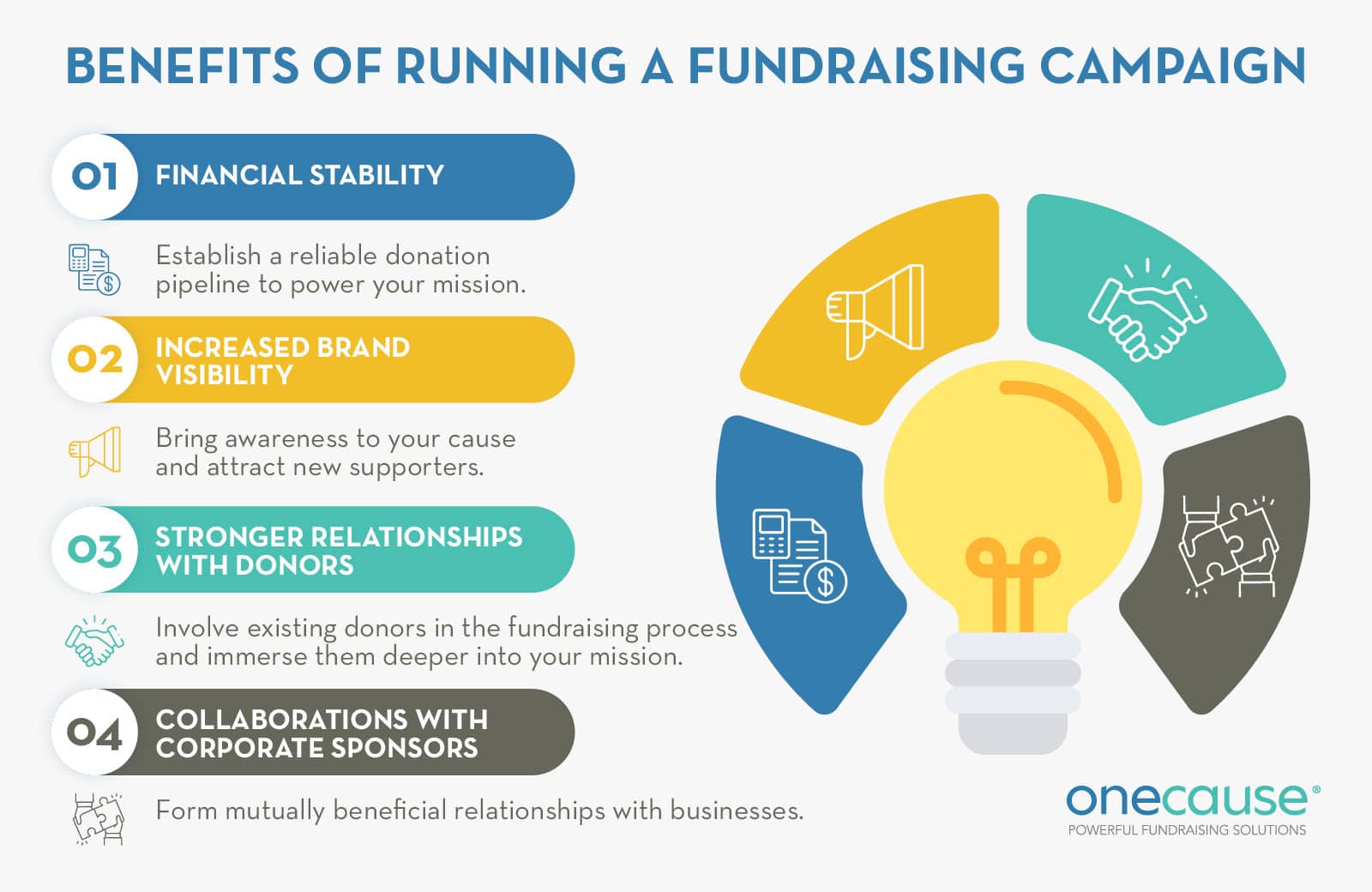The Function of Area Involvement in Nonprofit Fundraising: Structure Lasting Relationships for Sustainable Assistance
Area involvement is significantly identified as a crucial part of successful nonprofit fundraising. By fostering genuine partnerships with local stakeholders, companies can cultivate count on and commitment, which are necessary for sustainable assistance. Nevertheless, the methods and approaches employed to engage areas vary widely, raising crucial questions regarding effectiveness and influence. What are the very best practices for cultivating these important links, and how can nonprofits gauge their success in this arena? Recognizing these characteristics can substantially affect the future of fundraising efforts and the general objective of not-for-profit organizations.
Recognizing Area Engagement
Area engagement is a vital element of effective not-for-profit fundraising initiatives. It describes the strategies and activities that organizations employ to get in touch with their local communities, fostering relationships that are equally advantageous. Comprehending neighborhood interaction involves recognizing its multifaceted nature, that includes involvement, partnership, and outreach. Nonprofits need to determine essential stakeholders-- such as community members, regional organizations, and various other companies-- to develop efficient involvement approaches.
Efficient neighborhood interaction is asserted on active listening and responsiveness to the demands and passions of the neighborhood. This process involves obtaining comments, comprehending area dynamics, and guaranteeing that the organization's objective straightens with regional priorities. Engaging the community can take different forms, consisting of public meetings, volunteer possibilities, and partnership campaigns, each created to encourage participation and investment in the company's goals.
Additionally, area interaction should be come close to as a recurring dialogue rather than a single effort. By fostering a comprehensive environment where neighborhood voices are listened to and valued, nonprofits can develop a strong foundation for future fundraising ventures. Ultimately, a deep understanding of neighborhood interaction empowers companies to produce authentic connections that improve their overall performance and sustainability.
Advantages of Strong Relationships
Solid relationships created with community involvement return countless advantages for not-for-profit fundraising initiatives. Primarily, these connections foster trust fund and reputation, necessary components in motivating contributors to contribute. When possible supporters see a not-for-profit actively included in their community, they are most likely to think in its objective and effect.

Additionally, these partnerships assist in efficient interaction. Nonprofits can take advantage of their connections to share stories of impact, updates, and needs, making sure that supporters continue to be informed and engaged. This open line of communication not just strengthens bonds but additionally encourages word-of-mouth promo, increasing the nonprofit's reach.
Finally, solid area ties can bring in new partners and enrollers. Organizations and people are more likely to align with organizations that show significant neighborhood involvement, providing added sources and support that can dramatically improve fundraising capabilities. Therefore, cultivating durable partnerships with community engagement is integral to a not-for-profit's long-lasting fundraising success.
Approaches for Reliable Involvement
Exactly how can nonprofits efficiently engage their communities to boost fundraising initiatives? Regular updates, engaging content, and calls-to-action can galvanize community rate of interest and involvement.
2nd, organizing area events, such as workshops, volunteer possibilities, or fundraising drives, promotes face-to-face interaction, allowing nonprofits to showcase their impact and initiatives. These occasions not only raise funds yet additionally cultivate connections and permit community participants to engage directly with the cause.
Third, implementing tailored communication methods can enhance involvement. Customizing messages to certain benefactor sections based on passions and previous contributions fosters a sense of belonging and financial investment in the company's objective.
Lastly, developing partnerships with neighborhood services and community leaders can intensify outreach efforts. Joint efforts can enhance exposure and integrity, demonstrating a cumulative commitment to the area's well-being. By integrating these approaches, nonprofits can develop lasting partnerships that enhance fundraising initiatives and drive sustainable assistance.
Determining Engagement Success
While involving the community is crucial for effective nonprofit fundraising, measuring the performance of these interaction efforts is just as crucial. Establishing clear metrics allows companies to analyze how well they are getting in touch with their target market and accomplishing their fundraising objectives. Key performance indications (KPIs) such as donor retention rates, volunteer participation levels, and involvement on social networks platforms offer tangible information for evaluation.

Consistently examining these metrics enables companies to pivot their strategies when necessary, ensuring that neighborhood engagement stays aligned with their general goal. Moreover, sharing these results with stakeholders promotes transparency and builds trust fund, encouraging more community participation. Inevitably, a robust dimension find out framework not just learn the facts here now informs future fundraising campaigns however additionally enhances the partnership between the not-for-profit and its advocates, laying the foundation for sustainable success.
Study in Neighborhood Impact
Many study show the profound influence that neighborhood involvement can have on not-for-profit fundraising success. One remarkable instance is the "Food for Idea" initiative, where a neighborhood food financial institution partnered with services and colleges to host community suppers. These events not just elevated funds but likewise cultivated a sense of belonging amongst individuals, substantially raising benefactor retention prices.
An additional compelling case is the "Eco-friendly Spaces Job," which entailed neighborhood homeowners in the revitalization of city parks. This campaign not just garnered financial support from regional services yet also cultivated a volunteer base that added to continuous maintenance and programs. The feeling of ownership and pride amongst area participants equated right into continual contributions.
In the world of arts, the "Art for All" campaign efficiently involved neighborhood musicians and clients to develop collaborative art installations, leading to enhanced visibility and donations for a local arts nonprofit.
These examples highlight that when nonprofits prioritize community involvement, they can create long lasting connections that enhance fundraising efforts, ensuring sustainable support and promoting a vivid community society. Such instances show that area engagement is not simply a method but an important pillar of nonprofit success.
Conclusion
In verdict, community engagement is indispensable to the success of not-for-profit fundraising efforts. Ultimately, a robust structure of area support this article not only intensifies fundraising potential however additionally cultivates a culture of cooperation, important for attaining long-term organizational objectives and maintaining meaningful effect. fundraising consultant.
Nonprofits have to identify crucial stakeholders-- such as neighborhood participants, neighborhood companies, and various other organizations-- to produce reliable engagement techniques.

In final thought, community engagement is indispensable to the success of not-for-profit fundraising initiatives.
Comments on “Leading Nonprofit Fundraising Ideas: Innovative Techniques to Increase More Funds”